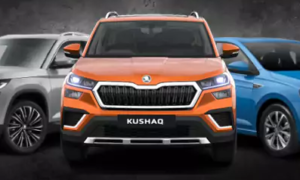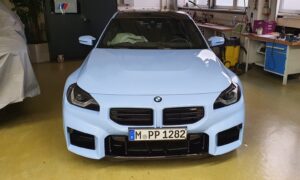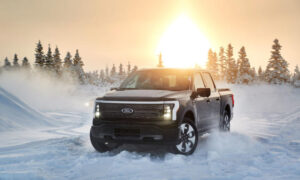I’ve found that happiness in numbers six, For more than a century, straight-six engines have been standard in automobiles.

Because straight-sixes are longer than V8s of the same capacity, they are more difficult to package, which limits the layout’s prevalence. Having just one bank of cylinders makes them technically straightforward.
Famously, when they run, they have a silky smoothness and a natural equilibrium. Furthermore, their music is just beautiful. Who among us hasn’t been moved by the glorious roar of a straight-six engine in an antique car? Here are 15 of the top ones for your viewing pleasure.
Spyker 60hp

Jacobus and Hendrik-Jan Spijker, two Dutch brothers, are credited with creating the first straight-six engine in 1903 for their 60hp racing vehicle. The four-wheel brakes and four-wheel drive of this remarkable vehicle were among their many innovations. The automobile was built to take part in the fatal 1903 Paris-Madrid race. Unfortunately (or maybe luckily), the Spyker wasn’t ready in time. Almost immediately after Spyker, the British manufacturer Napier produced its own straight-six model in 1904.
Rolls-Royce Silver Ghost

Although the term “Silver Ghost” initially referred to a specific Rolls-Royce 40/50hp with the registration number AX 201, it is now often used to refer to all instances of that type. The Silver Ghost debuted in 1906 and has always been available with a straight-six engine whose displacement ranged from 7.0 to 7.4 liters. AX 201 was determined to be almost 100% dependable over hundreds of kilometers of testing, and its engine was very quiet for its day.
Third-Generation Renault 40 CV

The 40CV was manufactured by Renault from 1911 to 1928, first with a 7.5-liter straight-six engine and then with a 9.1-liter engine, making it one of the company’s several high-end automobiles before World War Two. The 40CV won the Rallye Monte-Carlo Rally in 1925 despite being constructed with elegance and refinement. A one-seater variant of it averaged 108 mph for 24 hours the next year, setting a new world record.
AMC

In 1964, American Motors Corporation upgraded the performance of the Typhoon edition of the Rambler Classic with a new straight-six engine. Chrysler was pleased to continue developing what was by then a pretty ancient engine after acquiring AMC 22 years later. The AMC straight-six, which has been around since 1966 and has been called “as dependable as a block of wood,” was still in use as recently as 2006. It was utilized in the 4.0-liter version in various cars, including the second-generation Jeep Cherokee (pictured).
Aston Martin

Tadek WO Bentley’s original engine design for the Lagonda was replaced by Marek’s straight-six. The DBR2 racing vehicle was the first to employ the Marek’six,’ which was later incorporated into the DB4, the DB5 (renowned for its appearances in James Bond movies), the DB6, and the DBS. The’six,’ with displacements between 3.7 and 4.2 liters, was succeeded by a V8 engine, also developed by Marek.
Austin-Healey 3000

The Big Healey used the most powerful version of BMC’s C-series straight-six engine, which displaced 2.9 liters. Morris created this unit, which debuted in 1954, five years before Healey produced their 3000 series. It was standard on several models of the Austin Westminster and other BMC cars. The Healey was the only vehicle with a C-series engine to win races and rallies at the highest levels internationally.
The BMC E-Series

The E-series was offered with a variety of engine displacements, including a 1.5- or 1.7-liter four-cylinder and a 2.2- or 2.6-liter straight-six. The’six’ was used in a wide range of cars manufactured and sold in Australia and South Africa, as well as the Austin 1800 and later Princess (shown) produced in the United Kingdom, and other similar models sold under various badges. The Ambassador eventually replaced the Princess and was the only model available with the newer O-series four-cylinder engine.
BMW’s M1 and M5

The dohc M88 unit was introduced in 1978, however BMW had a long history of producing straight-six engines before to that. The M1 was the first BMW with a mid-mounted engine, and it was the only one BMW ever constructed (the other being the i8 hybrid). The first-generation M5, which was likewise powered by the M88, had impressive performance despite its understated exterior. Group 5 racing vehicles utilized the turbo version, while the 6 Series coupe and 7 Series luxury sedan also featured variations on the theme.
BMW M3 CSL

An very high-performance and pricey variant of the third-generation (E46) M3, the CSL had extremely low manufacturing numbers. The 3.2-liter straight-six engine was used in other M3s from the same period and in high-performance Z3 and Z4 sports cars, so it was not unfamiliar. BMW changed the camshafts and redesigned the intake and exhaust manifolds for the CSL. The previous 340HP (variable) power output is now about 360HP.
Bristol

The Bristol Aeroplane Company used a tuned version of the 1971 cc BMW M328 straight-six that debuted in 1936 in their first luxury vehicle, the 1947 400. This was the performance version of BMW’s first straight-six engine, the M78 from 1933. After expanding it to 2.2 liters, Bristol kept using it until 1961, when they finally switched to Chrysler V8s. Furthermore, the business provided the unit to Frazer Nash and AC for use in their road vehicles, as well as Cooper for use in its 1952 Formula Two racer.
Chevy Stovebolt

In 1929, Chevrolet released a new engine billed as “a six for the price of a four,” marking the company’s entry into the straight-six market. Because its cylinder head bolts looked like those on cast-iron wood stoves, it became known as the “Stovebolt.” Although the term “Stovebolt” is occasionally used to refer to later Chevrolet “six” engines, the original engine was only produced until 1937. After that, a modified unit commonly known as the “Blue Flame” took its place.
Chrysler Slant-Six

The cylinders of the Chrysler Slant-Six were tilted at an angle of 30 degrees from the vertical, making it unusual among straight-sixes but not unprecedented.
While it differed greatly from the BMC Mini in every other regard, it did share a manufacturing period with the little British automobile from 1959 until the year 2000. This motor was installed in a broad range of Chrysler vehicles, including the Dodge Polara (pictured).
Datsun 240Z

The stunning Datsun 240Z (also called the Nissan S30 and Nissan Fairlady Z) was powered by an engine from the L Series family. This family contained both inline “fours” and straight “sixes,” making it possible to choose between the two powertrain configurations. The 240Z only only employed six-cylinder engines, either 2.0 or 2.4 liters in displacement. Some models utilized the S20, a different 2.0-liter straight-six, although the L Series were by far the most prevalent. The subsequent 260Z and 280ZX used larger variants.
Ford Zephyr and Zodiac

Both four- and six-cylinder versions of the Ford Zephyr engine were produced. From 1954 through 1966, Zephyr and Zodiac models were available, both powered by a straight-six engine. These cars were eventually phased out in favor of the more advanced Essex V6. Zephyr’six’ engines were also employed by AC, Allard, Fairthorpe, Reliant, and even Lea-Francis for a very limited period of time among British niche makers.
Jaguar XK

The XK120 debuted the Jaguar XK straight-six in 1948 but didn’t go into mass production until 1950. Once the new V12 was debuted in 1971, Jaguar never again employed any other engine in their sedans, sports cars, or competition vehicles. The XK was not replaced by the V12, nevertheless. Daimler’s DS420 limousine, the last mass-produced vehicle to employ the engine, went out of production in 1992. Since then, Jaguar has brought back the XK to power various “continuation models,” including the Lightweight E-type, XKSS, D-type, and C-type.
READ MORE: Examining the Exquisite Cabin of the Mercedes-AMG GT63




